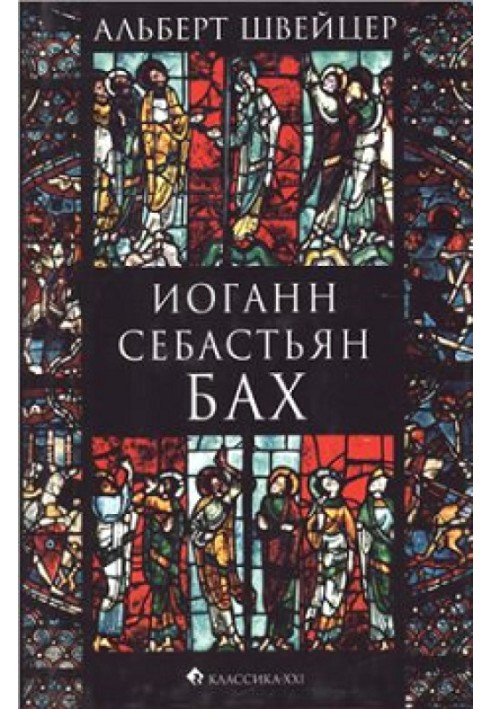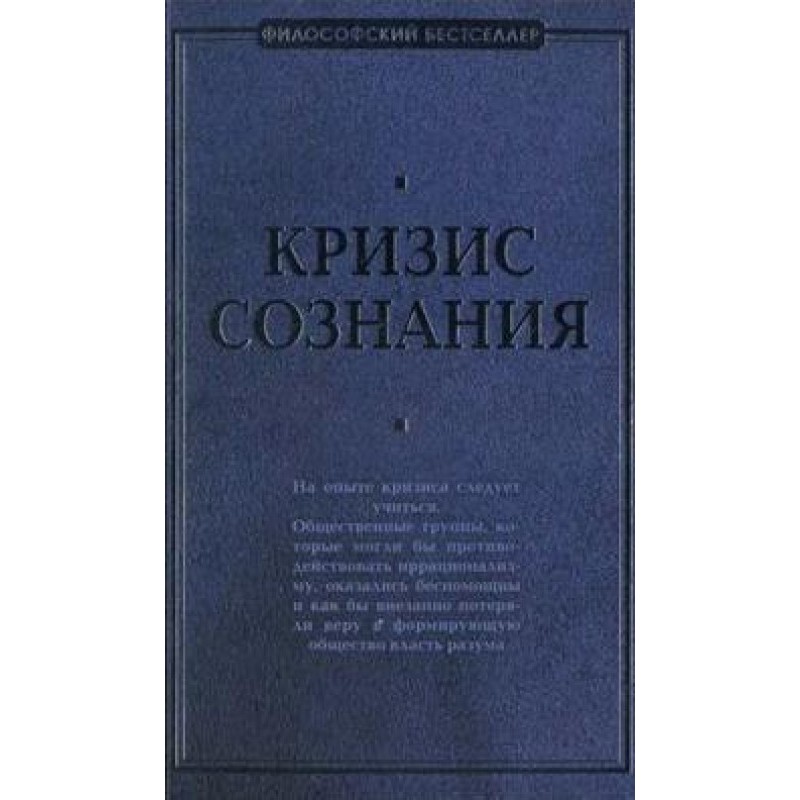Johann Sebastian Bach
 Instant download
Instant download
after payment (24/7)
 Wide range of formats
Wide range of formats
(for all gadgets)
 Full book
Full book
(including for Apple and Android)
The fundamental research on Bach, written by the outstanding scientist, philosopher and educator Albert Schweitzer, is published in Russian in its entirety in this edition: it is based on the 1964 edition translated by Ya.S. Druskin and edited by M.S. Druskin; the text reveals cuts that were made for ideological reasons. Schweizer's book examines the problems of aesthetics, style and genre evolution of Bach's work in a broad context. Particular attention is paid to spiritual works, the meaning of which is revealed by a detailed musical and symbolic analysis carried out in connection with the church rituals of that time. Modern information about the life and work of J. S. Bach is contained in the published Chronograph, compiled by the leading Russian Bach scholar T. V. Shabalina. IN The new edition takes into account the discoveries of recent years, including those made in St. Petersburg. CONTENTS: From the publisher 3 From the author 4I. ORIGINS OF BACH'S ART 5Subjective and objective art.II. THE APPEARANCE OF CHORAL TEXTS 8Reformation and medieval spiritual song. The first collection of songs. Protestant songwriters. III. THE APPEARANCE OF CHORAL MELODIES 15 Borrowings from the Middle Ages and original creations. Spiritual adaptations of secular melodies. The end of the creative period. IV. CHORAL IN THE CHURCH 22Organ and community singing during the Reformation. Choir and community chorale. Osiander and Hassler. The organ becomes the leader of community singing. Community singing in the time of Bach.V. CHORAL PRELUDES BEFORE BACH 33Samuel Scheidt.Pachelbel, Böhm, Reincken, Buxtehude.Bach and his predecessors.VI. CANTATAS AND “PASSION” BEFORE BACH 40 Ancient music on gospel themes. Schütz. The influence of Italian art on German sacred music. The problem of the form of musical texts. Strophic song and madrigal. The art of Schutz and its significance. The tasks of the new church art after Schutz. The main representatives of church art in the 17th century. “Musical” evenings (Abendmusiken) in Lübeck. Cantatas of the northern school. The new cantata. The history of the “Passion” before Bach. German opera and its significance for church music. Neumeister and Solomon Frank. A new form of music of the Passion. VII. FROM EISENAC TO LEIPZIG 72Ancestors.Childhood and years of study of Johann Sebastian.Arnstadt and Mühlhausen (1704-1707).Weimar (1708-1717) and Köthen (1717-1723).Trip to Hamburg (1720) and election as cantor of the Church of St. Thomas. VIII. BACH IN LEIPZIG 83Responsibilities cantor. Financial situation. School of Thomas in the times of Kuhnau and Bach. Struggle for university worship. Choir and orchestra. Music in Leipzig worship. First conflict with the magistrate. Bach's appeal to the Elector with a request to grant him the title of court composer. Struggle with the rector. Bach's position in the Leipzig musical world. Bach's children and their fate. IX. APPEARANCE, ESSENCE AND CHARACTER 109The friendliness and modesty of Bach.His attitude towards other musicians.Bach's prudence and hospitality.Emmanuel inherited his prudence from his father.Portraits of Bach.The coffin with the remains of Bach, discovered during excavations in the churchyard.Artistic personality.Bach's religion.X. WANDERINGS OF AN ARTIST. CRITICS AND FRIENDS. . . 1 23 Trips before 1723. Trips from Leipzig. Matteson and Bach. Scheibe against Bach. Praise in poetry and prose. Acquaintances of Bach and his friends. XI. ARTIST AND TEACHER 136General education of Bach. Mitzler's Musical Society. Bach studies and processes the works of other composers. Bach's creative gift and imagination are stimulated by other people's music. He uses other people's themes. Bach and the organ construction of his time. Clavichord, clavicembalo, piano. Harpsichord-lute and viola pomposa. Bach's style of playing the clavier and violin. Improvising, recording, conducting. Composer at work. Bach's students. Teaching composition. Creative achievements of his students and sons.XII. DEATH AND REVIVAL 161Illness and death. Responses of contemporaries to the death of Bach. Why Bach was forgotten. “Renaissance” of Bach. Forkel and Rochlitz. Zelter and Goethe. Renewal of the St. Matthew Passion. Victory and its consequences. Mosevius. Obstacles on the way to a correct assessment of Bach's music. History of the Bach Society and its publication of Bach's works. Bach's biography of Spitta. Liszt and Wagner. Bach in France, England and Italy. Bach and modernity. XIII. ORGAN WORKS 192Time of origin. Youth works. Preludes and fugues of the Weimar period. Preludes and fugues created after 1723. Small preludes, organ sonatas, passacaglia. Chorale preludes of the youthful time. "Organ book". Chorale preludes to religious songs. Eighteen chorales. XIV. PERFORMANCE OF ORGAN WORKS 212Bach and modern organ. Registration. Natural structure of fugues and preludes. Changing keyboards. Tempo, phrasing, decorations. Organ and keyboard fugues. Transcriptions.XV. KEYBOARD WORKS 231Publication of “Keyboard Works” exercises."French and English suites. Small preludes, inventions, symphonies. The emergence of the "Well-Tempered Clavier." Autographs of the "Well-Tempered Clavier." The worldview expressed in this work. Other preludes and fugues that have survived to this day. Fantasies and sonatas. Toccatas and capriccios. XVI. PERFORMANCE OF KEYBOARD WORKS 249 Ornamentation. Cembalo or modern piano. Dynamic shades. phrasing. Accentuation of Bach's themes. Tempo. Epilogue. XVII. CHAMBER AND ORCHESTRA WORKS 277Suites and sonatas for solo violin. Polyphonic violin playing to the time of Bach. Suite for solo cello. Sonatas for cymbal and violin, their performance. Sonatas for gamba and flute. Orchestral overtures. Brandenburg concertos and their performance. Keyboard concertos. Concertos for three and four claviers. Violin concertos. XVIII. “MUSICAL OFFERING” AND “ART OF FUGUE” 300Content and general character of “Musical Offering”. Canons. Contents of “Art of Fugue”. Fate of “Art of Fugue”. Brief analysis of this work as a whole. XIX. BACH AND AESTHETICS 308Spitta's biased attitude towards Bach's sound painting. Musical aesthetics ignores Bach.XX. POETIC AND PICTURE MUSIC 313 About the essence of art in general. Poetry and painting. Poetry and music. The connection of the arts in the perceptive fantasy. The discrepancy between the idea and artistic expression. About the transmission of the content of music in words. The poetic in Beethoven and Wagner. The pictorial in Schubert, Berlioz and Bach. XXI. WORD AND SOUND IN BACH 326Musical depiction of the structure of a verbal phrase. Declamation in recitatives. Poetic in chorales Bach.Depiction of emotions and feelings.Bach and program music.Sound painting by Bach.Pictorial sound symbolism.Bach's musical language.The emergence and development of Bach's musical language.XXII. MUSICAL LANGUAGE OF CHORALS 348Image using images and symbols. Step motives. Motives of peace and sorrow. Motifs of joy. “Speaking” motives. Transmission of individual words and poetic sequence of thoughts. Chorale fantasy to the melody of “Jesus Christus unser Heiland.” XXIII. MUSICAL LANGUAGE OF CANTATAS 362 Picture themes. Step motives. Anxiety motives. Fatigue motives. Rhythms of bliss. Fear motive. Sorrow motives. Joy motives. Connection of motives. Conclusion. XXIV. EARLY CANTATAS (ARNSTALT, MÜHLHAUSEN. WEIMAR. KÖTHEN) 396XXV. LEIPZIG CANTATAS 1723-1724 CHAPTER 414XXVI. "MAGNIFICAT" AND "PASSION OF JOHN" 427 “Magnificat”. “The Passion according to Luke” and the lost “Passion”. The origin and first performance of the “Passion according to John”. The musical character of the “Passion according to John”. Crowd choirs. Recitatives and arias. Opening and closing chorus.XXVII. CANTATAS 1725-1727 441XXVIII. “FUNERAL ODE” AND “MATTHEW PASSION” 454 “Funeral Ode”. Text of “Matthew Passion”. Choirs of “Matthew Passion”. Recitatives. Arias. XXIX. CANTATAS 1728-1734 CHAPTER 474XXX. SECULAR CANTATAS 494XXXI. MOTETS AND SONGS 518The time of origin of motets. Their performance: with or without accompaniment? XXXII. ORATORIES 524The emergence of the “Christmas Oratorio”. The musical character of the “Christmas Oratorio”. The symphony and its performance. Abbreviations in the “Christmas Oratorio”. “Easter Oratorio”. Cantata No. 11, designated by Bach himself as an oratorio. XXXIII. MASSES 531Emergence of the mass in h-minor, surviving autographs of the score and voices.Kyrie and Gloria.Credo, Sanctus and Osanna.Instrumentation of the Credo and Confiteor.Small masses. Sanctus.XXXIV. CANTATAS CREATED AFTER 1734 544XXXV. PERFORMANCE OF CANTATAS AND “PASSIONS” 578Phrasing.Accentuation.Tempo.Ornamentation.Dynamics.Solo singing, performance of arias.Boys’ voices.Performance of final chorales.Choras.Interpretation of Bach’s instrumentation.Bach orchestra. Strings. Flutes, oboes, trombones and cornets. Bach's trumpets and horns. Correct composition of Bach's orchestra. General bass. Performance of organ accompaniment. Correct choice of cantatas. Conclusion. M. Druskin. Albert Schweitzer and his book about Bach 639L. Kovnatskaya, M. Mishchenko. J. S. Bach in the life of the Druskin brothers 657Chronograph of the life and work of J. S. Bach 684Index of works by J. S. Bach 748Index of names 784
Data sheet
- Name of the Author
- Альберт Швейцер
- Language
- Russian
- Translator
- Х. А. Стрекаловская
Яков Семенович Друскин
















